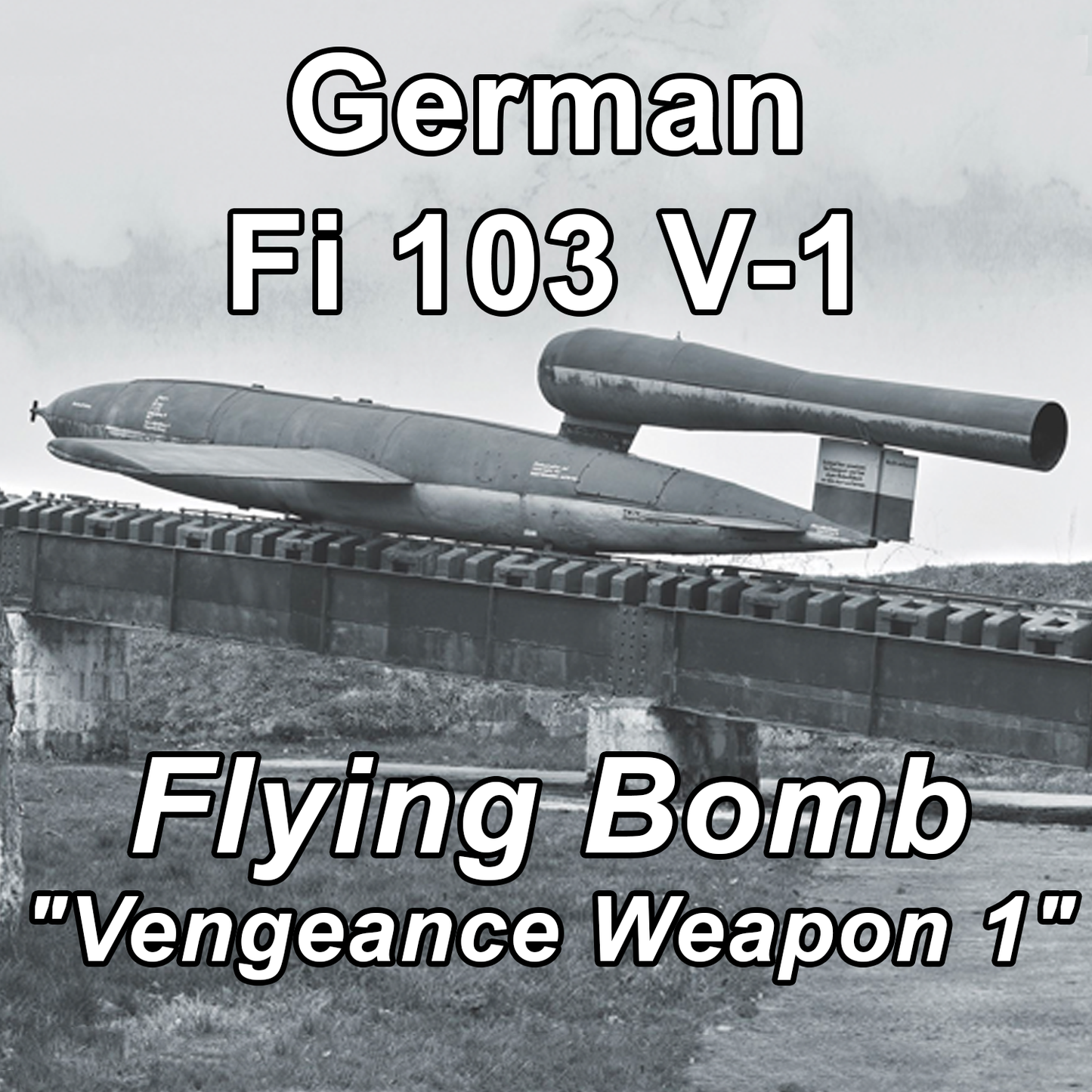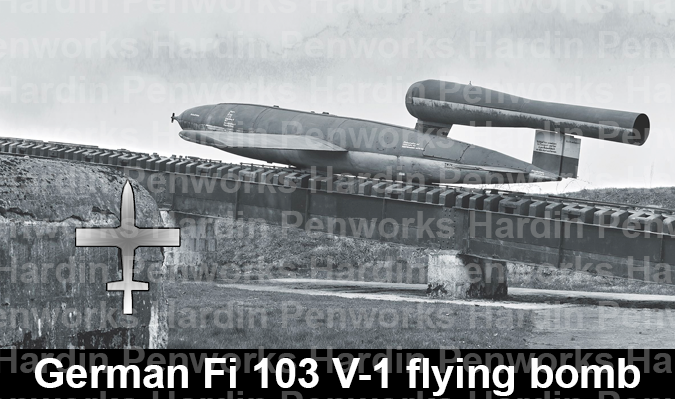German Fi 103 V-1 Flying Bomb - Vengeance Weapon 1
German Fi 103 V-1 Flying Bomb - Vengeance Weapon 1
5.0 / 5.0
(1) 1 total reviews
Prodcut Base price with no add-on options
Low stock: 5 left
Product Price with any add-on options selected
Couldn't load pickup availability
Sierra and Bolt embedded blanks with WWII German Fi 103 V-1 Flying Bomb "Vengeance Weapon 1" recovered relic material.
All blanks will come with one COA per blank.
COAs are 4" x 6" card stock with foil COA seal.
The V-1 flying bomb (German: Vergeltungswaffe 1 "Vengeance Weapon 1") was an early cruise missile. Its official Reich Aviation Ministry (RLM) designation was Fieseler Fi 103 and its suggestive name was Höllenhund (hellhound). It was also known to the Allies as the buzz bomb or doodlebug and in Germany as Kirschkern (cherry stone) or Maikäfer (maybug).
The V-1 was the first of the Vergeltungswaffen (V-weapons) deployed for the terror bombing of London. It was developed at Peenemünde Army Research Center in 1939 by the Luftwaffe at the beginning of the Second World War, and during initial development was known by the codename "Cherry Stone". Due to its limited range, the thousands of V-1 missiles launched into England were fired from launch facilities along the French (Pas-de-Calais) and Dutch coasts or by modified He 111 aircraft.
The Wehrmacht first launched the V-1s against London on 13 June 1944,[6] one week after (and prompted by) the successful Allied landings in France. At peak, more than one hundred V-1s a day were fired at southeast England, 9,521 in total, decreasing in number as sites were overrun until October 1944, when the last V-1 site in range of Britain was overrun by Allied forces. After this, the Germans directed V-1s at the port of Antwerp and at other targets in Belgium, launching a further 2,448 V-1s. The attacks stopped only a month before the war in Europe ended, when the last launch site in the Low Countries was overrun on 29 March 1945.
As part of operations against the V-1, the British operated an arrangement of air defences, including anti-aircraft guns, barrage balloons, and fighter aircraft, to intercept the bombs before they reached their targets, while the launch sites and underground storage depots became targets for Allied attacks including strategic bombing.
In 1944, a number of tests of this weapon were apparently conducted in Tornio, Finland. On one occasion, several Finnish soldiers saw a German plane launch what they described as a bomb shaped like a small, winged aircraft. The flight and impact of another prototype was seen by Finnish frontline soldiers; they noted that its engine stopped suddenly, causing the V-1 to descend sharply, and explode on impact, leaving a crater 20–30 metres (66–98 ft) wide. These V-1s became known to Finnish soldiers as "flying torpedoes".
Share


An excellent blank, generated a lot of interest at my most recent show and ultimately sold to a valued repeat customer just as I knew it would.



